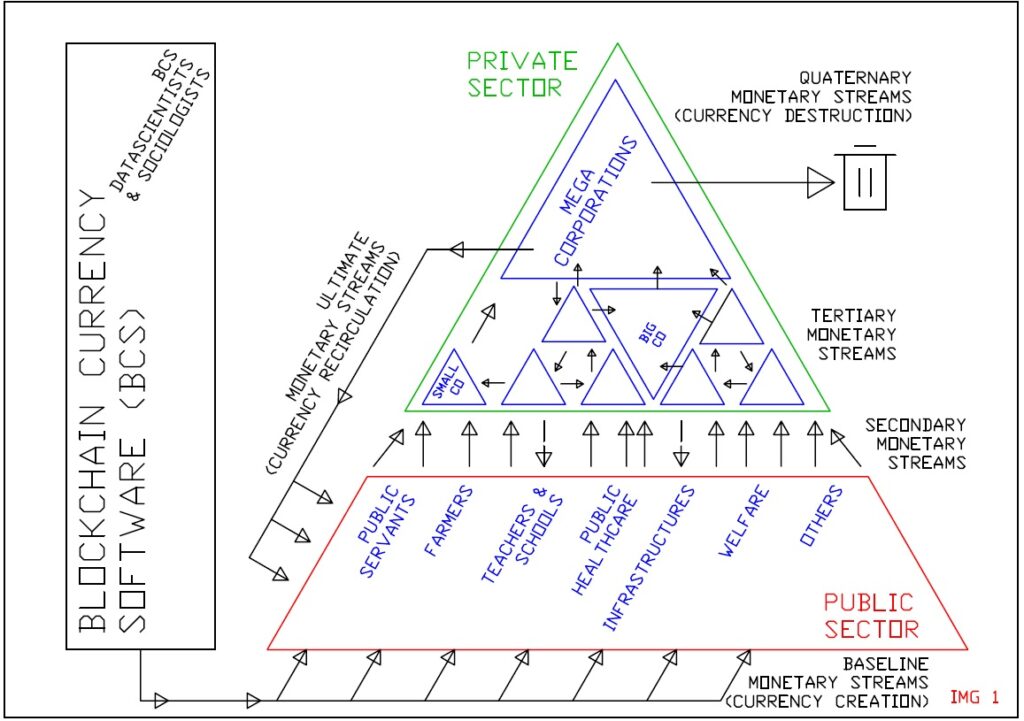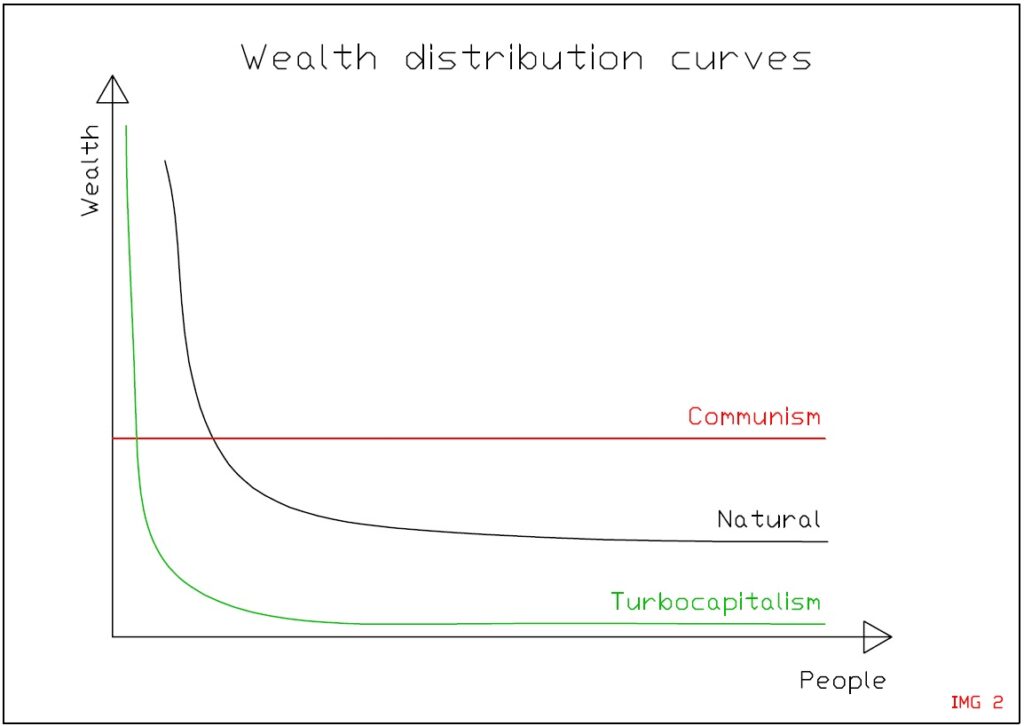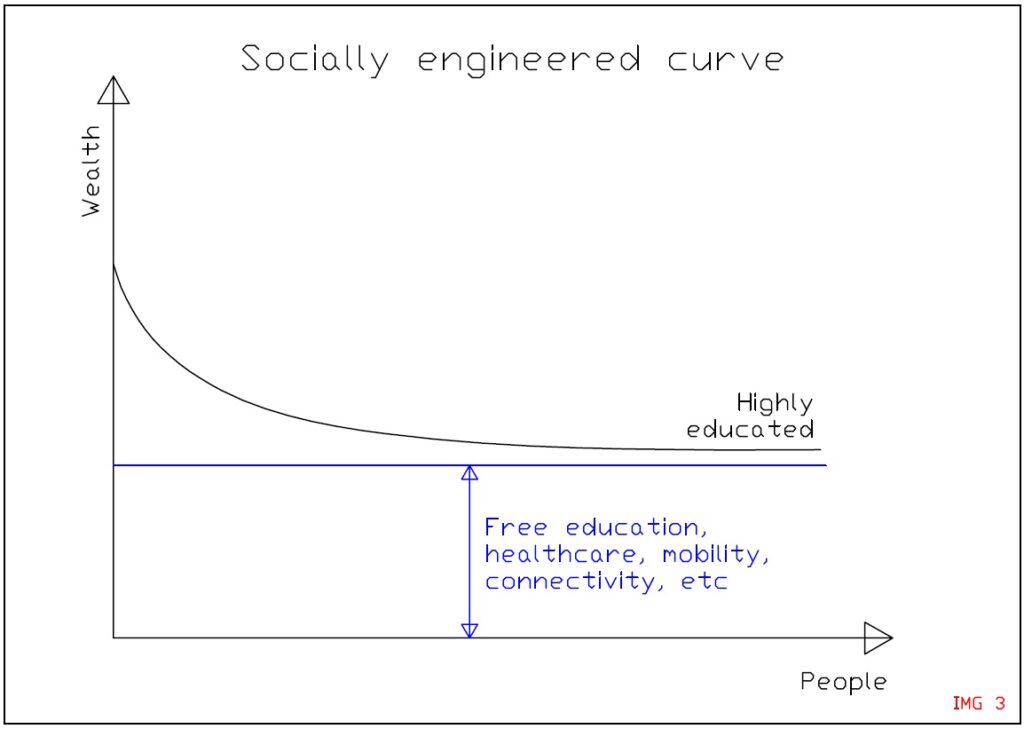Postcards

Just after The War, all efforts were focused on mere agricultural survival of what was left of mankind.
After the initial few years spent to stabilize life supporting infrastructures, some time, energy and technology could be spared to initiate restoration programs and colonization of large swaths of contaminated land.
Eventually science and technology began to flourish once again alongside with an organic reform of society and associated political structures.
Free energy = Free everything?
Imagine a future where self-powering free energy and free gravity devices are ubiquitous and everywhere. Such devices will allow for unprecedented quality of life across the board since energy and transportation costs will converge to virtually zero, aside from maintenance and expansion of said infrastructures.
The development of these technologies was only possible because all the political and economic structures preventing them were wiped out during The War, however the first nation who broke the tabu and started developing free energy and free gravity prototypes on a semi industrial scale was China, toward the end of The War as a last push to try and gain technical and military supremacy to win the conflict.
Needless to say that in the past, various inventors had a shot to develop and showcase certain verboten technologies (especially in the USA and Europe) but these nations missed those windows of opportunity decades before.
In any case once mankind made contact with other alien cultures and saw that their spacecrafts were neither complicate in manufacturing nor had to carry needless amounts of fuel, neither fossil nor nuclear type, but simply solid state electric powered and free gravity propelled, it was a bit like the Columbus’s egg: Seeing it so simply possible and working was a moment of technological atonement and it spurred the development of our own free energy machines development and research, since the theoretical basis of these machines were already there, hiding in plain sight in the was sea of already available human knowledge.
Currency and blockchain
The currency system is similar to the 3 layers system described before, but the blockchain technology is much more than just currency. It is notary acts, marriage/birth certificates, medical records, important email communications, contractual documents, automatic payments programming, law codes and much more.
The statistical treatment of publicly available and yet anonymous blockchain data is the backbone of state and private investment decision and planning. The goal of the decisions: minimize malinvestment practices and economic differential between different regions.
No taxes?
Before we move forward it is important to understand the lifecycle of a currency and its balance within deflationary and inflationary movements.
A fixed base currency is inherently deflationary, since population and economy grow, but the currency base is fixed, then less and less currency is available in the pockets of each citizen for normal everyday expenses, so everything begins to cost less and less and your grocery bill, instead of being 30/40/50 units of currency will end up being more like 0.0000-many-zeroes-in-between-and-some-fractional-number-at-the-end-30/40/50 units. So we will end up calculating our bills in terms of negative value of logarithms in base 10, which is no fun operation to do considering our fingers measure unities and not logarithms.
Then the currency base needs to expand to keep the grocery bills within countable ranges (target inflation ZERO). Eventually the statistical treatment of the data shows that as economy grows, an increasing amount of currency is subtracted from circulation by corporations with huge positive cash flow streams accumulating into accounts were inflows are much greater than outflows.
If that bulk amount of currency is not re-injected back into the pockets of other companies (investment) or citizens (employees) AKA low speed of money, then new currency must be fed from the lower bottom of the economic layers and actors to balance the inflation goals in a sort of universal basic income currency movement.

Eventually as money is injected at the bottom of the system into public servants and lower income accounts automatically by blockchain software algorithms, we can decide whether an equal or somewhat proportional amount of currency shall be subtracted from the wealthier accounts of corporations and individuals (which is called taxes), or if we shall simply allow the currency base to expand freely without any need to limit the expansion too tightly.
The destruction of currency off the balance sheet of mega corporations is meant to spur technological investment and wealth redistribution: If you don’t use it, you lose it, meaning that if you have too much of it, then you need to reinvest it back into infrastructures to keep the money flow going, or else it will be taken away, destroyed (beware, not taxed away), like when banks dispose of old worn out bills.
What is actually happening with the FED and other central banks happily printing currency into the balance sheets of corporations and stock market is quite the opposite of the blockchain algorithm as it gives the financial comfort to corporations to not do any investments, it promotes laziness and undermines innovation creating the biggest self-reinforcing malinvestment loop ever seen.
This equilibrium between currency creation and currency destruction or taxation/redistribution as to speak is a very delicate matter, very carefully studied among the scholars who supervise the smooth functioning and programming of the blockchain software.
Beyond democracy
Government is not made by elected people but is made by randomly chosen people from all sectors and alleys of society from the age of 20 up to the age of 60. The call to serve cannot be transferred nor avoided aside from very particular health or personal circumstances.
Who decided this? The issue with democratically elected governments is that this kind of organization tends to concentrate all sorts of power-driven people, sociopaths and psychopaths within the government ranks and this turned out to be a very primitive and non-dynamic form of government.
After a 2-year apprenticeship on how the system works, the job of these people for the subsequent 3 years will be to tweak and polish the legal codes and blockchain software rules in line with their personal, real life experience of how society should work.
Then the law and financial codes become a sort of Wikipedia continuously feed-backed and updated by commoners rather than elected power-seeking psychopaths.
Most people will work on this task for no less than 3 years, however some of these who shows particular proficiency in this job could stay for as long as 6 years before going back to their previous lives.
Certain type of laws or regulations, whether regional, national or global can be decided and implemented through Digital Direct Democracy voting preferences part of the blockchain file of each individual (call it a live, dynamic type of Vox Populi, Vox Dei system if you like).
Trouble with the curve
The issue with communistic societies described above is the lack of knowledge and respect for the social and wealth curve distribution.
What this picture shows us is that aside from small, scattered and isolated communities, once you start considering highly economically interconnected populations then a fair amount of economic actors will naturally sit at the bottom of the wealth curve, whilst a small amount of population will thrive to reach the top of the wealth curve. This statistical distribution is hardwired in human brains and social behavior.

Previous attempts to smoothen this out (ie the communism) had disastrous effects on the welfare and even survival of its citizens. Other attempts to tighten it too much (ie nationalism or turbocapitalism with one “king” and a multitude of pawns or minions) also had disastrous consequences because inequality ultimately breeds trouble for the whole society.
What we learn from it is that within society there always are those who are somewhat more capable and more hard working and they expect their competences to be rewarded, recognized and ultimately raise within the curve. Denying this upward or downward mobility or the presence of such a social curve undermines the very foundation of a stable and productive society.
Now that we know of the existence of its curve and the disastrous consequences for these societies which denied or opposed its natural distribution, we can study the ways we can bend it and shape it organically within a creative exercise of social engineering.
There are parameters and social factors which can be used to twist and bend the curve without causing stressors which can undermine social stability and development. This is what the social curve looks like (or strives toward) in the society of the future:

Now people might ask: Why are we engineering society around this curve and not other curves?
Answer: Because this is the most efficient one in terms of wealth and culture generation and this is the way more evolved societies are shaping their development around. If we want to sit at the table of evolved galactic societies and bring some value to it, then we need to raise ourselves above the dog-eat-dog politics
One way to positively move the curve without causing social frictions and unbalances is to elevate its base, so a whole new set of things becomes free and granted. The most basic ones in order of importance: Education, followed by Food/Environmental, then Healthcare, Connectivity, Infrastructures and as the society increases its wealth and stability it can go as high as Housing and free Space travel.
Another way to smoothen or else flatten the curve is through education. A highly educated society shifts the competition and drive for excellence from the boring monetary axis to all sorts of knowledge and competence “axis”. Then people of such educated society will compete not to necessarily be the richest among their peers, but to be the most expert or skilled within a certain domain whether it is brain surgery, sports, arts, engineering, Earth skills and so on…
Social sciences will be an especially important, almost fundamental part of any curricula in the future. A highly educated society is a hard to fool, stable and productive society.
Workers
Who is doing all the work in the society to keep up the base wealth curve described above? Well, they are the public servants also called the base workforce and are picked among the most promising students or workers from all domains of society.
They maintain the agricultural infrastructures along with education healthcare and R&D programs and work jointly with the government to address infrastructural development.
Again, infrastructures can be paid by simply generating the currency needed through the Blockchain software, as long as all relevant checks within government, engineering, but the workhours and resources required to make these infrastructures are not unlimited, so choosing carefully what IS the most important and relevant among all possible projects IS the true challenge.
Despite the apparent economic stability that these positions imply, they are also highly scrutinized ones. The performance of each public servant is constantly evaluated again through statistical methods so we will have a curve distribution of overperforming workers and underperforming ones.
The underperforming ones will be required to travel and relocate to better institutions or schools to improve their quality of work and techniques, whilst overperforming ones will receive financial incentive to relocate toward depressed areas or institutions which need more expert guidance to get back to the par. The objective is to smoothen out regional differences in terms of quality of education, healthcare services as well as other critical functions supported by the public servants.
The end of debt
Not that you can’t borrow money in the future, only that the issuance of debt is a strictly regulated blockchain program with mins and maxes and all sorts of balances to prevent people from getting overburdened by debt, so if you want more access to it then you simply need to improve your finances and debt to income ratio.
Main thing you will find surprising: Debts are not open ended. There is an interest rate but there is also a maximum amount it can compound to, once this amount is reached then the interest rate goes to zero and the debt has reached its full maturity. No more than that fixed maximum amount shall be repaid even if the debt is never extinguished.
Debt’s legal value is only within the domain of silvercoin currency, so it is in theory possible to escape debt altogether by moving all your economic assets into bronzecoins. Unfortunately, many businesses and legal activities require payments in silvercoins for transparency so it is often unpractical to fully escape debt unless you plan to live at the margin of society and economic activity.
Fake news
Inputting and editing information (content) on the Free Internet will be popular in the future as much as it is nowadays, the only issue is about inputting false content either as a mistake due to ignorance or outrightly malicious for politic propaganda or other private agenda.
Never mind the fact that as society grows more educated and culturally sophisticated, the harder it is to fool it with emotional hacks and other propaganda techniques. Still fake information can pollute the matrix and trust in society altogether.
What is important about information is its source and the “credibility score” of the one creating the content. Of course, there is still a lot of satiric type content, politically debated type content and also publishing content under aliases, but what really matters is what we publish within our blockchain records as truthful information “at the best of my knowledge”.
All the content we decide to add formally to our blockchain file is as good as written under oath and has a name, a surname and a legally binding value. All other unregistered aliased contents are just buzz, rumors, entertainment and sometimes deep fakes.
Knowingly recording an untrue statement under your own blockchain file is a felony. If an untrue statement is inputted by mistake or because of ignorance then it is just a nuisance impacting your credibility score on smaller or greater degree depending on the scale of inaccuracy but in general is no big deal.
Journalists, influencers and politicians (if any) are the people most concerned with their credibility score, their job is often about sieving blockchain content data streams (audio, video, text, etc) and report what is most relevant to the public.
What is the Free Internet
This refers to ethic search algorithm implemented by the IT communities of the future to maintain an unbiased blockchain/wikipedian base of knowledge.
Back in the days Google became the giant of web searches because its original algorithm would push up the best answers to each question as observed by user traffic (end of searching after a certain page/answer was visited by the average user).
But later on Google became a monopoly of information then the algorithm changed in such a way that the answer to a question within Google relies the user to Google itself and its associated branches such as Youtube or other pay-for-play ads and corporations paying to be on top of search pages. This paid for answers does not make for unbiased answers which is why a Free version of the web search algorithm is available to all users in order to get the most accurate and unbiased answer to any question “at the best of mankind knowledge”.
Basically we will separate the knowledge into a wikipedian/high truth non commercial type information, and a pay for play type one more useful for commercial purposes.
